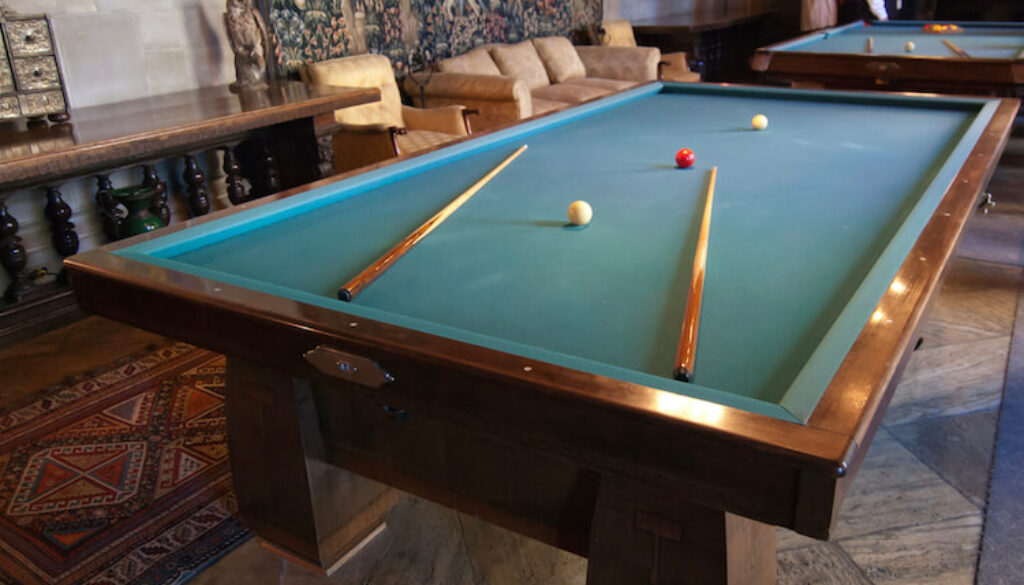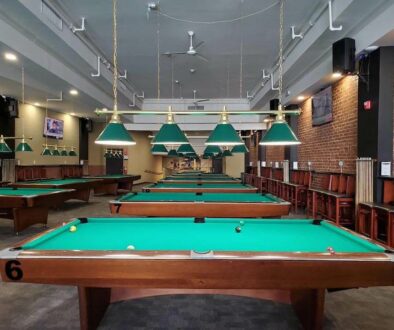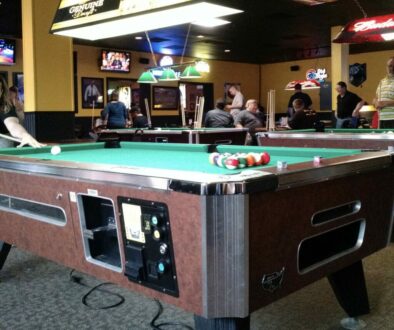Carom Billiards and the Mystery of Pocketless Pool Tables
The world of billiards is great for many reasons, one of them being that there is such a wide variety of games we can play. From 8-ball and 10-ball to straight pool and cutthroat, players have so many options.
One great variation of billiards is the French-born game of Carom. In this article, we’ll help explain exactly what Carom is, variations of Carom games, its rules, how to play, the type of table it’s played on, and how it differs from regular pool.
What is Carom Billiards?
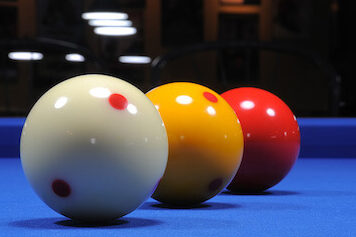
Carom is a variation of billiards played on a no-pocket pool table with 3 balls instead of 16. Many pool players also refer to Carom as “Carambole billiards” or “French billiards.”
Specifics aren’t clear on how and when Carom was invented. But it is generally believed that the sport originated in France in the 18th century, which also explains the name “French billiards.”
Like most other cue sports, Carom evolved from lawn games like croquet and became very popular over time. Carom and it’s variations are most popular in Western Europe, but are now played all over the world.
Carom is also very popular in Asian countries like the Philippines, Vietnam and Japan, but not as common in the USA due to the popularity of games like 8-ball and 9-ball.
How Do You Play Carom Billiards?
In its most basic form, the objective of Carom is to score points, which is what players refer to as “counts.” You do this by bouncing (caroming) your cue ball off the opponent’s cue ball and the object ball in one shot.
The game is typically played with 3 balls: 1 red ball, 1 white ball, and 1 white ball with a spot. When starting play, the cue ball must hit the red ball first for the break shot. After that, players can score when they hit the red ball (the object ball) or the opponent’s cue ball first.
Specific Carom billiards rules depend on the game variation you are playing. For instance, when playing the popular 3-cushion Carom billiard variations, the cue ball must bounce off 3 cushions before hitting the last ball.
Pocketless Pool Tables
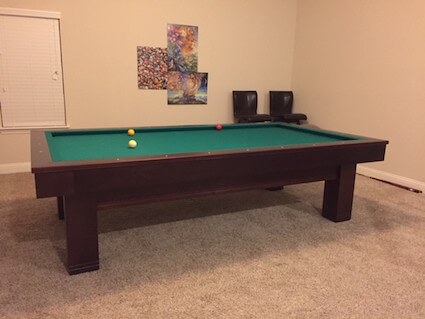
One key element that sets Carom billiards apart from other cue sports is the playing surface – a no-pocket pool table. Pockets are not needed in Carom, because the objective is not to sink balls, but ricochet off of them.
Carom table size:
The international standard Carom billiards table is 9.3 by 4.7 ft when measured from one rail cushion to the other. But, like pool tables, several other size variations exist. For example, many Carom tables used by amateur players tend to be slightly larger, typically 10 by 5 ft.
Carom billiard tables typically have a slate bed that should be heated to around 9°F above room temperature. Heating keeps the cloth moisture-free, ensuring more consistent ball rebound and roll. A heated table also plays faster.
Heating the slate bed is mandatory for international Carom tournaments.
Carom Billiard Games
There are several Carom billiard games that exist, but the 4 most popular ones are Balkline, Straight Rail, 3-cushion, and 1-cushion. Here is an overview of each variation’s objective, rules, and scoring system:
1. Balkline
Balkline divides the table into balk spaces and defines the number of points allowed in each. Once the points are attained, at least one of the balls must leave the particular balk space. This was the most popular Carom billiard game from the 1880s to the 1930s.
A balkline table will have 6 or 9 balk spaces. The number of points you can score on each balk space depends on the specific balkline game. For instance, if you are playing the popular 18.2 balkline, the lines will be 18 inches from the rail. You can only score 2 points in each space, and then at least one ball must leave the area to continue scoring.
2. Straight Rail
Straight rail is the simplest of all Carom billiard games. The objective is to score a “count” by hitting both the object ball and the other cue ball in one stroke.
The order does not matter during play, but you must contact the object ball first during the break shot. The first player to make an agreed number of counts wins.
3. 3-Cushion
3-cushion Carom gets its name from one of its main objectives: bouncing the cue ball into an object ball, then hitting 3 cushions before hitting the last ball.
This is one of the most challenging Carom variations, and averaging just 1 point in a game is fantastic. Anything more than this is exceptional and is only achieved by the best in the game.
4. 1-Cushion
A 1-cushion Carom is simpler than 3-cushion because, unlike the latter, you do not have to contact 3 cushions.
The game’s objective is to contact at least 1 cushion after hitting the first ball with the cue ball, and before the cue ball hits the last object ball.
Carom Billiards vs. Pool
Most readers are more familiar with pool games, such as 8-ball and 9-ball, than they are with Carom. So how does Carom differ from pool?
Here are a few key differences between the two:
Balls
Carom balls are typically larger than pool balls, with a 2-7/16-inch diameter. They come in a set of 3 balls: 2 white cue balls but with one marked to differentiate them, and a red object ball.
Standard pool balls have a 2.25-inch diameter, and they come in a set of 16 balls. The pool ball set includes a black 8-ball, a white cue ball, and 14 object balls.
Carom Cue vs. Pool Cue
The exact cue dimensions are often a matter of preference for both carom and pool. But, carom cues tend to be a bit shorter than pool cues.
Carom cues usually have a thicker tip. They have cue tip diameters that average between 12.5 to 13.5 mm in diameter. Pool cues have slightly smaller tip diameters, between 12 and 13 mm.
Also, most Carom cues are still wooden and handmade, while lots of pool cues are now made from carbon fiber and are mass-produced in factories.
Playing Surface
Carom billiards games are played on a pool table with no pockets. Pool games are played on a table with 6 pockets. A pool table will have a pocket on each of the four corners and one on each of the two long sides.
Table Dimensions
Carom and pool are played on tables with a width that is half the length. Also, both are available in various sizes to suit different game variations and playing levels.
The standard playing surface on a Carom table is 9.3 by 4.7 ft. But the 10 by 5 ft. Carom table is the most popular size, especially among amateur players.
Tournament-size pool tables are 9 by 4.5 ft, but there are several other sizes. For instance, smaller 8 by 4 ft. and 7 by 3.5 ft. pool tables are quite common in bars and homes. You can learn more by visiting our pool table size guide!
Wrap Up
A no-pocket pool table can seem quite unusual if you see it for the first time. But, it is pretty common in many European countries where Carom billiards is popular.
Besides the pocketless table, Carom is played with only 3 balls. Scoring and the exact rules depend on the specific Carom variation, but it is mostly about hitting the object ball and the opponent’s cue ball and contacting the cushions during shots.
Carom can be an exciting game that you can play both casually and at a professional level. It offers a way for pool players to learn a new game if they need some variety. You just need time to study and understand the rules, and lots of practice!
As always, Happy Shooting!

